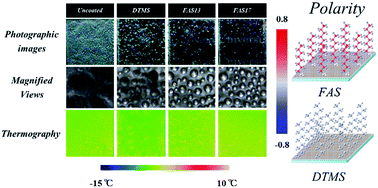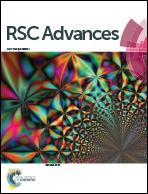A superrepellent coating with dynamic fluorine chains for frosting suppression: effects of polarity, coalescence and ice nucleation free energy barrier†
Abstract
Ice formation on surfaces is a serious issue in many different fields in terms of function, safety, and cost of operation in human life. Hydrophobic coating technology is one of the effective ways to prevent ice formation. Previous studies focused on the effects of surface structure and surface chemical modification on anti-icing ability. However, only a few studies have clarified a method to inhibit the initial formation of ice on surfaces; in addition, an effective mechanism for anti-frosting has not been identified as yet. Here, hydrophobic smooth surface coatings using three coupling agents with low surface energy and different molecular chain dynamics were fabricated. The surface roughnesses were lower than 1 nm. The fluorocarbon-based coatings delayed frost formation compared with the uncoated surface until −6 °C. We explored why the coating surface prevented frost formation and the effects of surface chemical modification on frost resistance from the viewpoint of heat exchange contact area during droplet coalescence, ice nucleation free energy barrier, polarity and polarizability of the coated surface.


 Please wait while we load your content...
Please wait while we load your content...